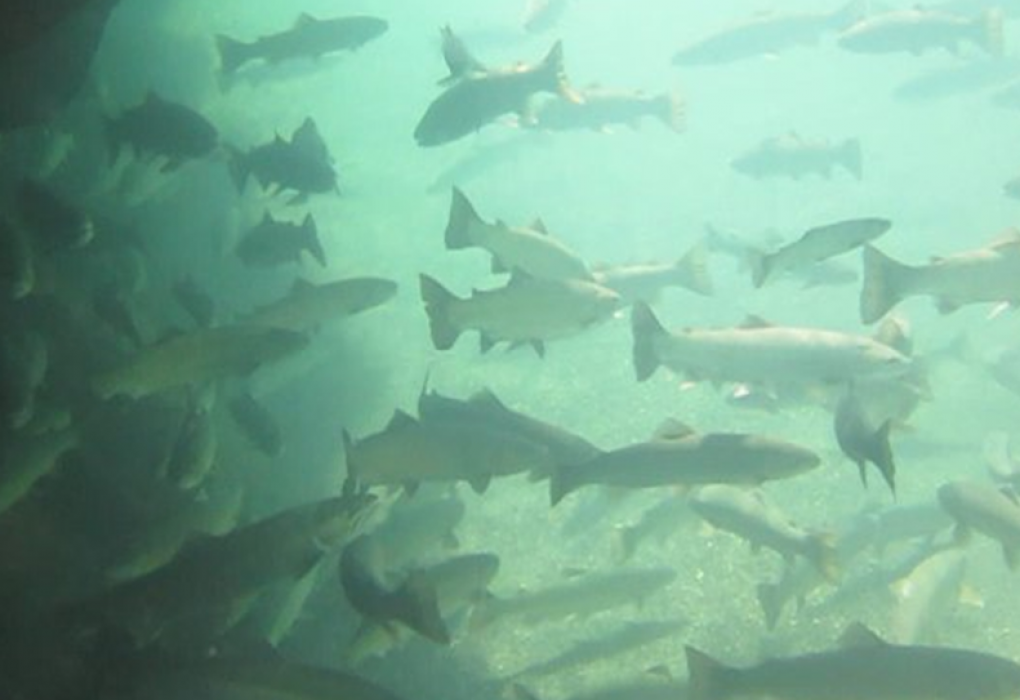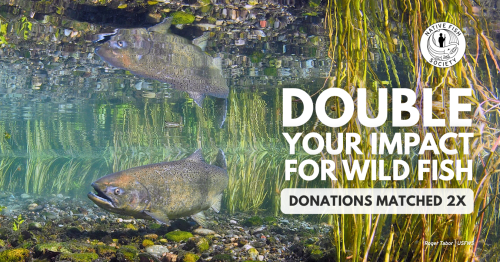New Science Shines Light on Eel River Steelhead Ecology
n northwestern California there are two distinct runs of steelhead, winter-run and summer-run. Winter-run enter freshwater sexually mature, in the late fall through early spring, swim to their spawning grounds, spawn and quickly return to the ocean. Summer-run enter freshwater sexually immature, in the mid spring through early summer, swim high up in the watershed and find cold (and often deep) pools to wait out the warm summer months. With the return of rain in the fall and winter, they move to their spawning grounds, spawn and return to the ocean. Anthropogenic alterations to the landscape disproportionately impact summer-run steelhead. Consequently, summer-run populations have experienced more dramatic declines than their winter-run counterparts, similar to spring and fall Chinook.
The Eel River is currently home to the southernmost population of summer steelhead in the Pacific Northwest. We wanted to investigate life history variation in the Eel River. To do this we collected caudal fin clip samples from 834 steelhead, spread across three of the major forks, the Van Duzen, Middle Fork and upper mainstem. The Van Duzen and Middle Fork Eel Rivers are home to the two extant populations of summer-run steelhead in the Eel. The upper mainstem has been inaccessible to anadromous fish since the construction of Scott Dam in 1922, but there are historical reports of summer-run steelhead in the upper reach prior to the dam. The hydroelectric project the dam is a part of is currently up for re-licensing, with decommissioning a potential outcome. We also utilized 2089 samples collected for a separate study from the South Fork of the Eel, where summer-run steelhead have not been observed since the 1960’s.
We focused our sampling and analyses to answer a few questions.
1. Are summer-run steelhead in the Van Duzen River strays from the Middle Fork Eel River or an independent population?
2. Is Eaton Falls on the Van Duzen (a 30 foot bedrock wall in the middle of a jumble of house-sized boulders) a complete barrier to anadromy?
3. How do different types of barriers impact the distribution of summer and winter-run steelhead?
4. Has the resident trout population above Scott Dam maintained genetic diversity since being inaccessible to anadromous fish?
5. Is the summer-run variant (the genetic component necessary to be a summer-run steelhead) present in the South Fork Eel?
We used a sequencing method that allows us to look across the genome to examine the distribution of summer and winter-run individuals, anadromous and resident individuals and overall differentiation between populations. We then analyzed our sequencing data with a few computer programs and arrived at the following conclusions.
1. Summer-run steelhead in the Van Duzen River represent an independent population, not a population maintained by dispersal from the Middle Fork Eel River. Having such a low census population size (an average of 145 over the past decade), they are facing a serious threat of extirpation.
2. Eaton Falls does not represent a total barrier to upstream migration and anadromous steelhead likely pass it with at least some regularity. This is further supported by a separate otolith study and observation of an adult summer-run steelhead above the falls while conducting the sampling. Steelhead are capable of surprising feats.
3. Summer and winter-run steelhead use distinct spawning and rearing habitat in both the Van Duzen and Middle Fork Eel Rivers, with winter-run fish largely excluded from the habitat above flow dependent barriers. The ability to consistently pass upstream of these barriers is necessary to maintain the evolutionary advantage garnered by being a summer-run steelhead.
4. Summer-run steelhead inhabited the upper Eel, prior to construction of Scott Dam and the summer-run alleles have up to now persisted in the resident population. Overall genetic variation and life-history variation (anadromous and resident type) has been maintained above the dam. The resident trout populations above the dam would likely be a suitable source population for recolonization of the upper basin by anadromous individuals if the dam were to be removed.
5. We did not detect the presence of the summer-run variant in the South Fork Eel. We concluded that the summer-run allele is not maintained as standing variation in winter-run steelhead populations. This further emphasizes the need to protect summer-run populations as we did not find evidence that winter-run populations maintain the potential to produce summer-run individuals.
Read the full study at https://www.biorxiv.org/content/10.1101/2020.03.18...

